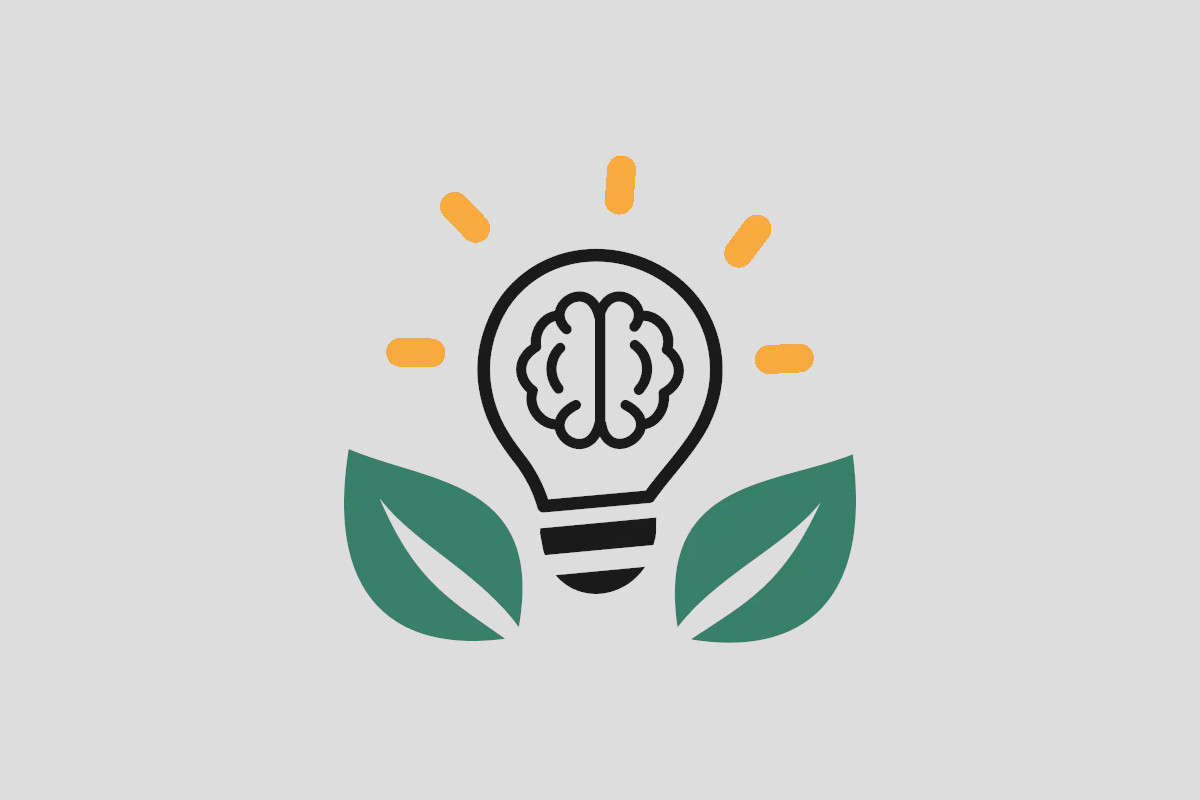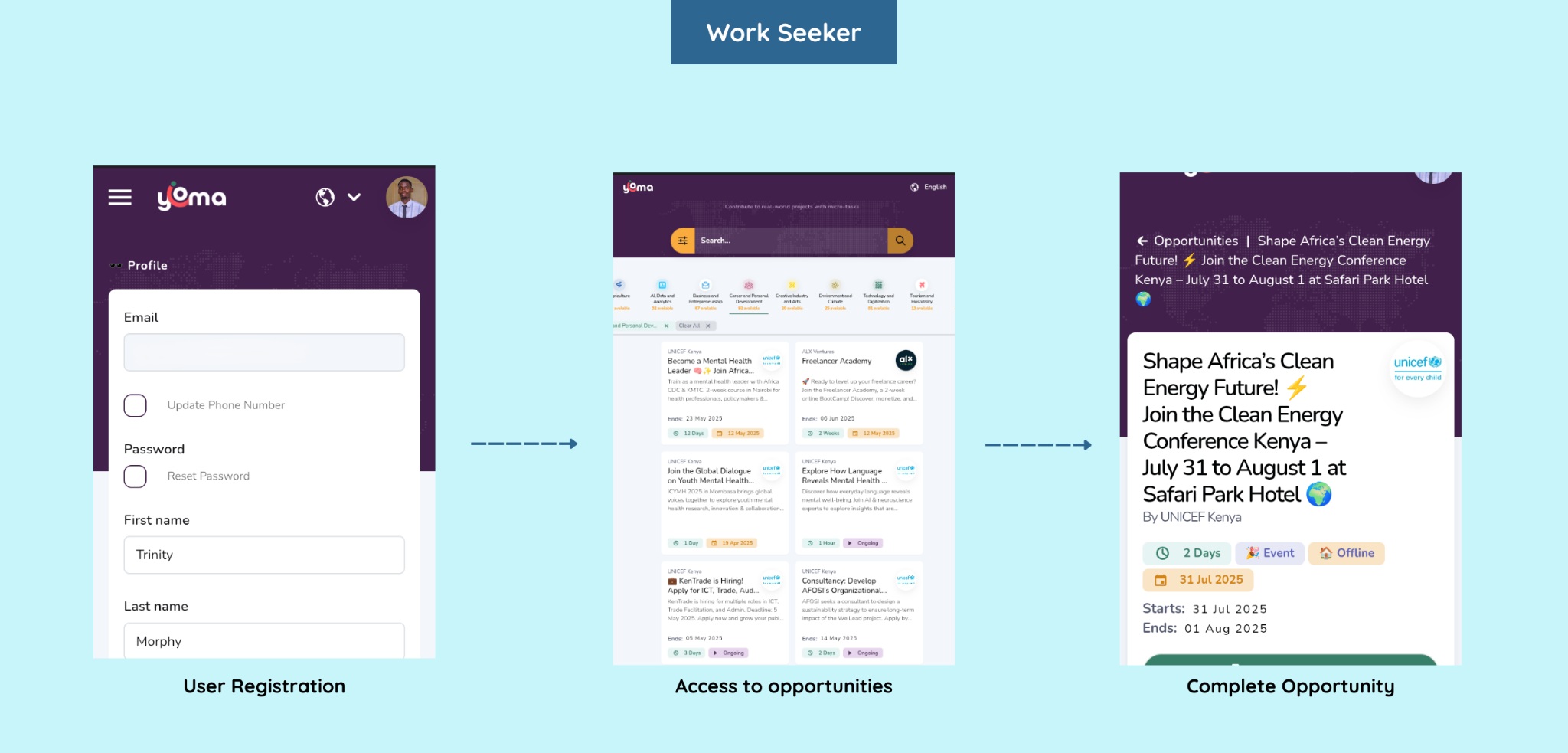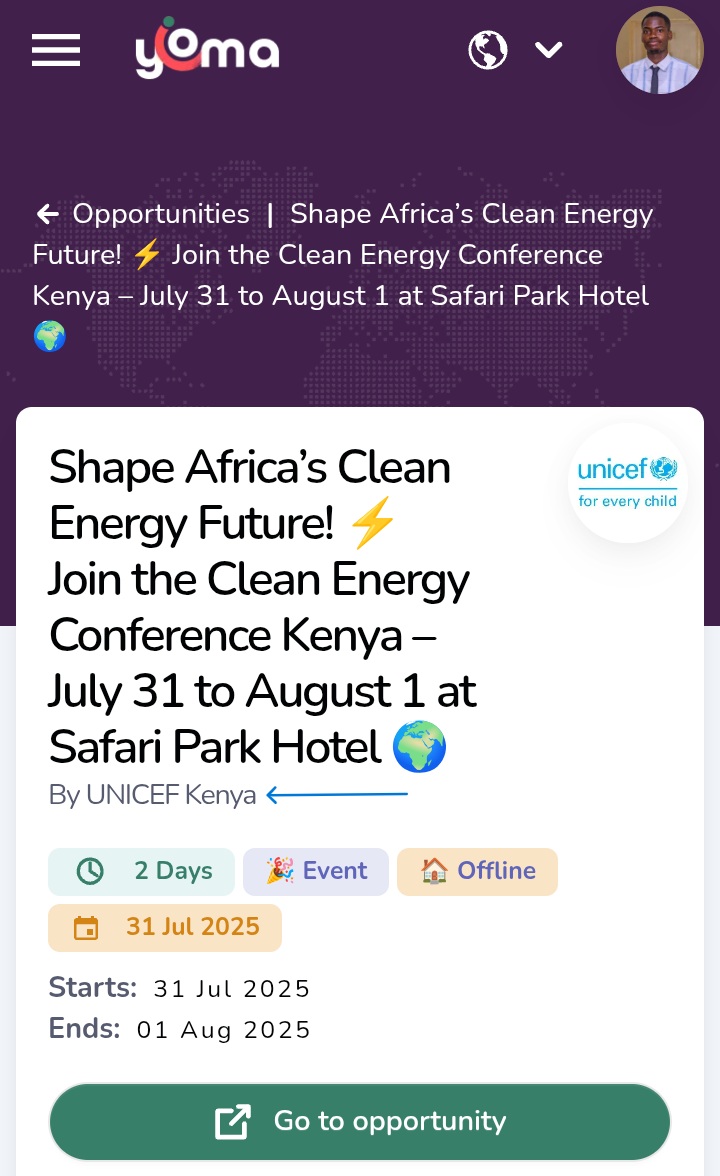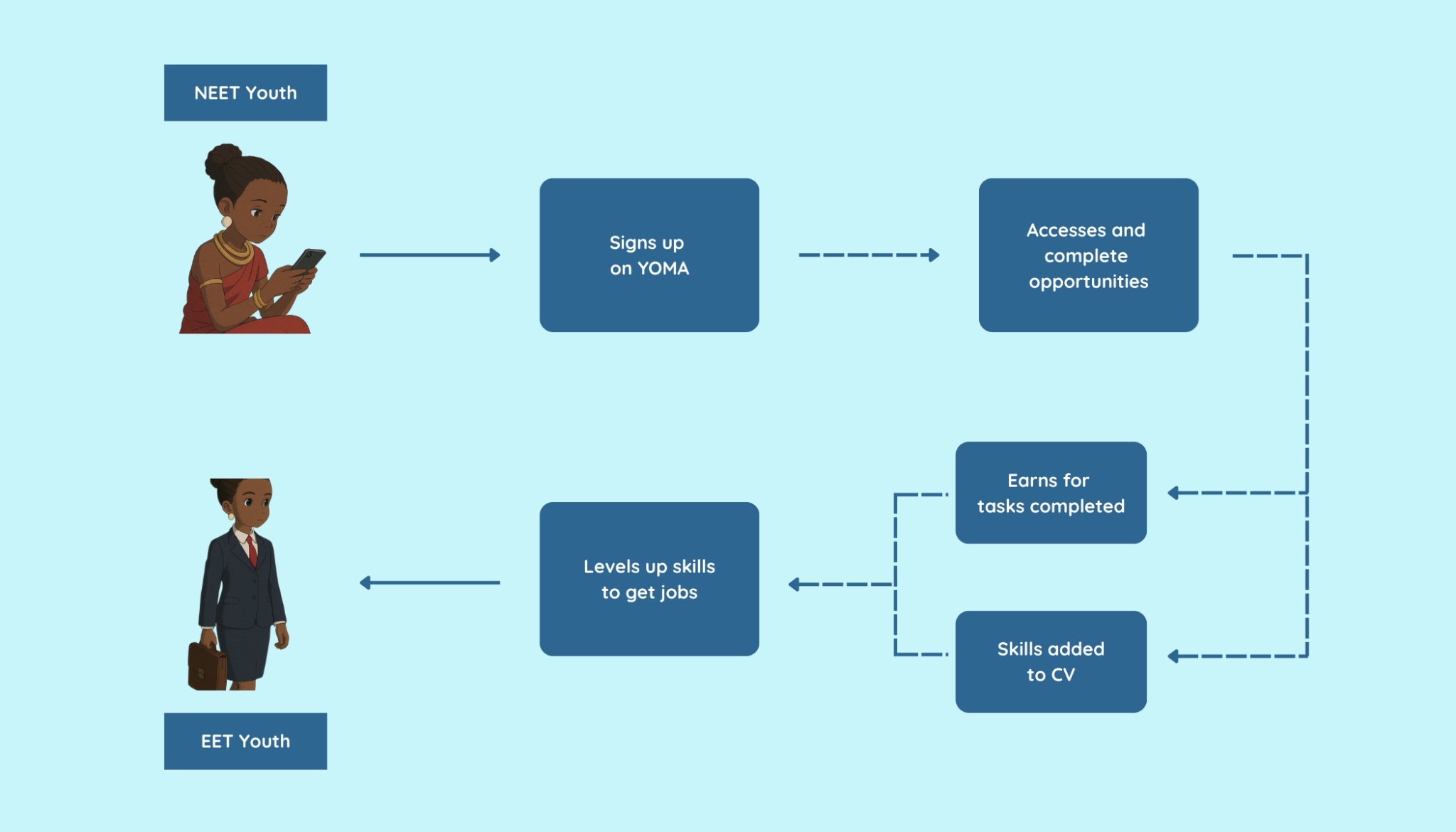Exploring the Social Impact Side of ReFi with YOMA
Trinity Morphy takes a closer look at the Youth Agency Marketplace for Africans and its potential for social impact.
By Trinity Morphy | August 14th, 2025

We define ReFi as using Web3 for ecological and social impact. Yet, the number of ReFi projects directly focused on social impact pales in comparison to the projects on the ecological side. So, when I found out about the Youth Agency Marketplace for Africans (YOMA), a blockchain-based platform that rewarded African youths for learning skills for the modern world, I was ecstatic to dive into it.
As the world rapidly advances, young people all over the world are left behind simply because they do not have the relevant skill sets to adapt, earn, and thrive. Unfortunately, African youths have it worse. According to the 2020 UNDESA World Youth Report, Sub-saharan Africa has the lowest global rate (8.6%) of gross enrolment in tertiary education. Niger has the highest global rate of youths not in education, employment, or training at 68.6%. In sub-Saharan Africa, a youth labour force participation rate of 53.2%, one of the highest globally, reflects limited access to education, widespread poverty, and a lack of decent job opportunities.
Young people can thrive through education, employment, or training, but in Africa, these pathways are fraught with challenges. Education is often outdated, with some state-backed tertiary institutions still using decades-old curricula that leave graduates ill-prepared to compete with peers from private universities. Employment is equally bleak, many students start businesses out of necessity, not passion, due to financial pressure and a lack of job prospects. Even the apprenticeship system, which has produced many skilled tradespeople, now struggles as the shrinking economy reduces purchasing power, making it harder for both white-collar workers and craftsmen to sustain livelihoods.
Seeing first hand the problems with the aforementioned pathways, UNICEF, RLabs, DIDx, Goodwall, IXO World, ZLTO and others collaborated to develop YOMA, a digital impact ecosystem designed to empower young people in Africa by connecting them with opportunities for learning (education), skills development (training), and earning (employment). In this article, I seek to analyse YOMA and its solutions for achieving long-term impact, alongside the obstacles it faces.
YOMA users
As at September 2023, YOMA had about 250,000 registered users worldwide, 67,000 completed and 12 major partnerships secured. Here we look at the key pillars of YOMA that heavily contributed to achieving these success metrics.
Work seekers
Work seekers in this context are the youths seeking earning opportunities. Upon registration, they gain access to explore and complete available tasks on the platform. Once tasks are completed, work seekers can easily submit claims for their work upon which they’ll receive payments upon claims validation.

Implementation partners
Implementation partners create opportunities on the platform for the work seekers. They also review registrations of work seekers for specific opportunities and evaluate the claims submitted for completed tasks. Subsequently, implementation partners are responsible for authorising payments for completed tasks and then conducting a final review of the payments processed. For the opportunity in the image below, we can see that UNICEF Kenya is the implementation Partner.

Impact funders
Impact funders basically allocate capital to pay work seekers for completing opportunities and by select implementation partners. Once the capital is allocated, funders can then submit a contribution claim on the platform which will enable them to monitor the progress and impact of their investments. Impact funders can also double as implementation partners.
YOMA impact model
The YOMA impact model follows a clear path: Education, Training, and Employment. It's designed to help young people who are not in school or working move toward meaningful jobs.
It starts with easy-to-access education through mobile phones. Once they finish these learning tasks, they move on to the training phase. As they grow their skills, they become ready for real job opportunities. In the final phase, employment, YOMA helps connect these young people to available jobs through the platform.
This creates a clear path from unemployment to a sustainable career.

As of July 2024, IXO convened with a core group of YOMA stakeholders to integrate Web3 infrastructure aimed at advancing impact tokenisation, programmable identity domains, decentralised payment flows, oracle-based verification, and DAO-enabled governance. This collaboration focuses on enabling youth to meaningfully participate in decision-making processes while improving the transparency and coordination of impact initiatives. At present, the second design sprint is underway, with additional partners onboarded and additional technical functionalities actively developed and tested.
Education
Ekaette, a young Efik girl who is Not in Education, Employment, or Training (NEET), begins her journey with YOMA by signing up on the platform with her mobile device. Once registered, Ekaette can access opportunities available on the YOMA platform including learning modules, skill-building exercises, and practical tasks or projects that help her gain knowledge and experience.
Training
As Ekaette completes these opportunities, she earns redeemable tokens such as ZLTO, which is used to reward educational progress, motivating her to complete more tasks. With each activity completed, she gains soft skills and experiences, which are automatically recorded and added to her digital CV on the platform.
As her skills grow and she advances through various levels on YOMA, Ekaette gradually transitions from being NEET to becoming a youth equipped with education and training.
Employment
Over time, she begins carrying out impactful tasks on the platform to earn and, subsequently, secure permanent job opportunities through it. With persistence and a bit of luck, she eventually lands one. Over the course of 3–5 years, Ekaette transforms from a youth with no access to education, employment, or training into someone actively pursuing a career path, all thanks to YOMA.
Challenges
Absence of structured learning
Upskilling for a particular career path requires structured learning roadmaps and models to move from A-Z. Unfortunately, without prior understanding of a predetermined career path, work seekers on YOMA are likely to spend their precious time moving from one course to another with no coherence on the end goal.
A practical solution would be to add career guidance tools and ready-made learning paths like those from the roadmap.sh directly into the platform. When users sign up, they can explore different career options based on local job opportunities and their interests. For each path, YOMA could show a list of recommended courses, tasks, and projects on the platform. This would help guide users step-by-step from basic to advanced skills. Adding progress checks and suggestions for what to do next would keep things clear and focused, helping users make the most of their time as they work toward specific career goals.
More learning, less earning
On the YOMA platform, there are learning and earning opportunities but the earning opportunities have ridiculous requirements for applying especially when we look at the age bracket of youth. For statistical purposes, the United Nations defines youths as individuals between the ages of 15-24 whereas we have job opportunities on YOMA asking for 8 years experience.
To close the gap between youth aged 15–24 and job opportunities that ask for too much experience (like 8 years), YOMA could create a tiered system. This would include beginner-level tasks and projects made for young people with little or no work experience, helping them build skills through small tasks. More advanced jobs can still ask for experience, but YOMA should offer clear ways for young users to qualify over time like finishing learning modules or working on smaller projects within the platform.
Non-inclusivity
YOMA seeks to provide upskilling and earning opportunities for African youths but the reality is that these opportunities are only accessible to youths with a certain level of formal education and technological literacy. It completely ignores youths with no formal education as well as those without access to smartphones.
YOMA could set up community learning centres with basic computers and internet access. Local partners can run these centres, helping people with little formal education learn digital skills and explore available opportunities. To help these people earn, YOMA could offer a mix of tasks, not just ones that need smartphones or tech skills. These could include things like collecting local data or helping organise activities in their communities.
What's next?
To make a bigger impact on the African youth, YOMA needs to build on what’s working and improve where it’s falling short. A key step is to add clear career paths and guidance tools, helping young people stay focused and see real results from their learning. YOMA should also create different levels of earning opportunities so that both beginners and more experienced users can stay involved and grow. To reach more young people, especially those without regular internet access, YOMA should set up community learning centers and offer ways to earn using simple, low-tech tools. By doing all this, YOMA can become a stronger platform that helps more young Africans gain useful skills, find good work, and succeed in today’s world
This article represents the opinion of the author(s) and does not necessarily reflect the editorial stance of CARBON Copy.